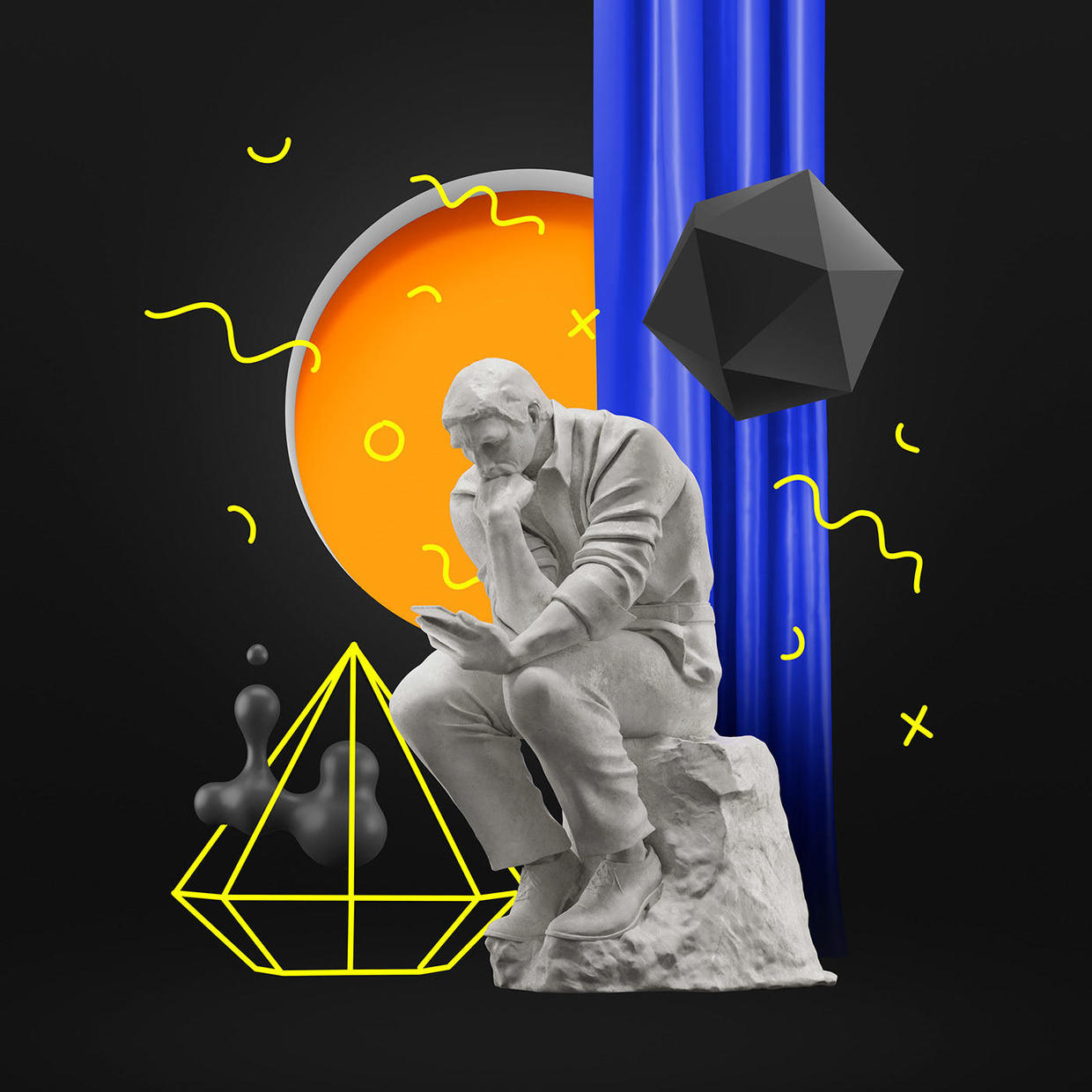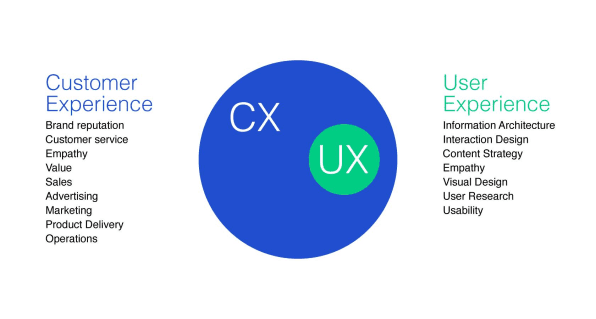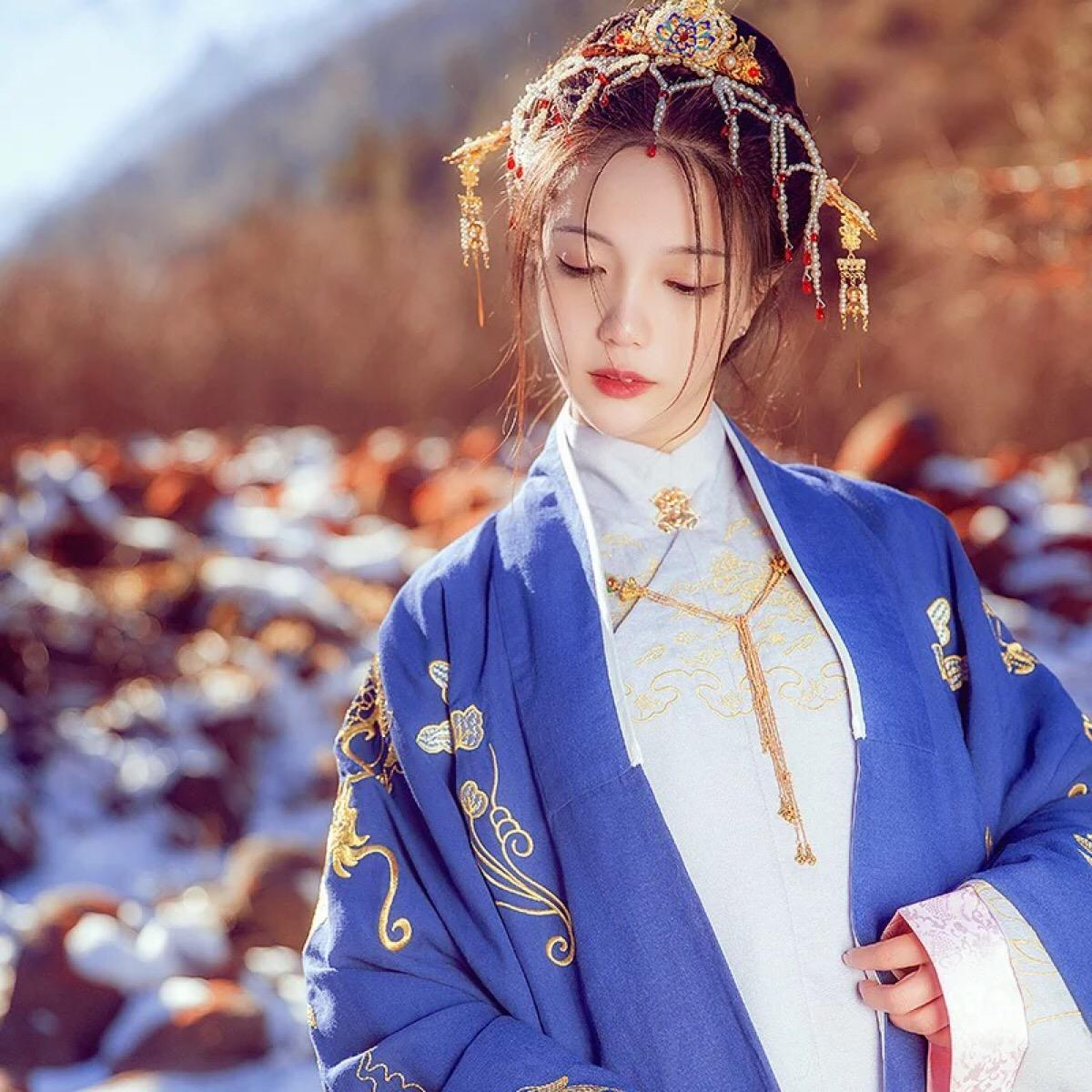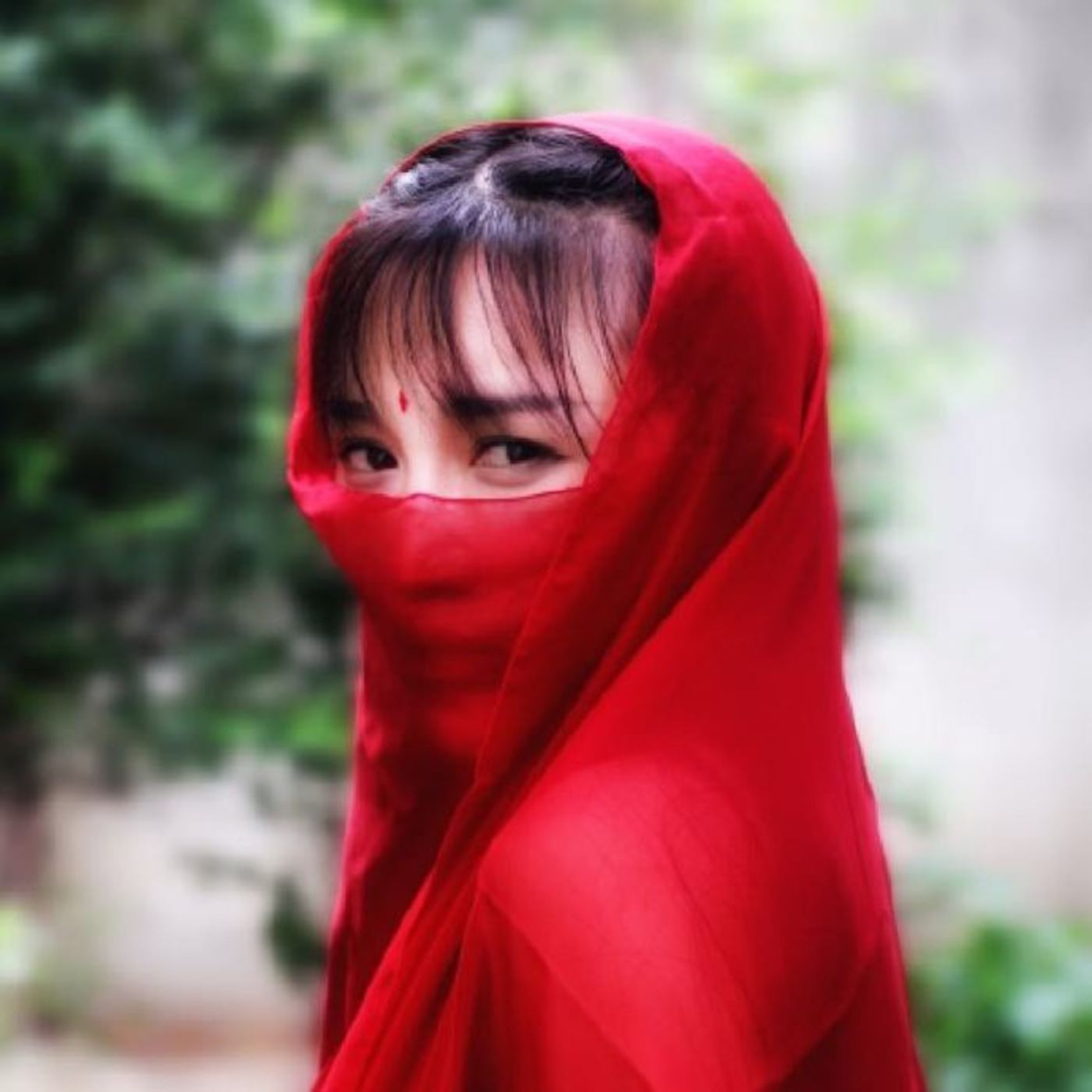From technology products to beauty makeup (Hanfu) to food videos, perhaps consumers want "industrial" products with more and more depth...

When major institutions are busy summing up the year with "a few words", regardless of whether they are kidney-walking or heart-walking; if you are also given a few options, let you use three key words to describe the current industry What should you do?
There is plenty of time, take your time and don't worry.
As industrial designers, let's throw a brick to attract jade first.
Huaqiang North.
Hanfu circle.
Li Ziqi.
These eight-pole words may not be very accurate, and forced coupling together will only make people confused: one is the epitome of urban development, the other is still "night walking in brocade clothes" at this stage, and the last one is "an epic counterattack of a woman".
What's more, with the rise of Huami OV, Huaqiangbei, which has completed its historical task, has come to the moment when it should "retire after success". Although Hanfu circle has caught up with the background of the rise of national power, it has never been able to awaken the real recognition of the public. As for Li Ziqi's "operation method" from foreign fire to domestic fire, he also needs to resist this round of public opinion; it seems that these three "consumption phenomena" are not directly related to industrial design.
However, considering the "shanzhai technology" provided by Huaqiangbei, the "cultural identity" surging in the Hanfu circle, and the "pastoral pastoral" created by Li Ziqi, they are more or less consumer contexts derived from the product itself; Although products are no longer the absolute protagonists here, they are indispensable in the entire consumer context.
And from another angle, from the changes of a city, Huaqiangbei stands at the crossroads of fate. To the hobbies of minority users, Hanfu circle has always been unable to balance cultural heritage; Even the evaluation criteria of mass users, Li Ziqi was held up on the altar by leisurely mouth. This progressive consumption phenomenon just helps us to clarify a clear consumption design trend.
The decline of user experience (UX) design and the rise of customer experience (CX) design.

User experience design: It is a user-centered design method, and the design is designed with user needs as the goal; the design process focuses on user-centered, and the concept of user experience enters the entire process from the earliest stage of development. And throughout.
Customer experience design: covers all channels through which a brand and users interact, such as the quality of the customer's product use experience, the store's lights, background music and even the advertisements placed. These experiences will reshape the customer's subjective impression of the product in a whole form.
Relatively speaking:
UX focuses on the user's experience, which is a micro category. The core lies in "improving" the interactive scene experience in the process of human-computer interaction.
CX focuses on the entire product life cycle. Of course, here it is more about the part that coincides with the customer. It is more macro. The core is to "enhance" all the TouchPoints (contact points) of users and products.
The decline of UX design can be seen from the excessive maturity of "touch display" technology. The mobile phone industry is monopolized by several giants, and even Apple is a bit out of order. If the hardware experience stops, it can only make a fuss about marketing and software unless new transformative materials and technologies and interactions appear in this field.
The rise of CX design is just to square the blank of UX design.
Some people translate CX as "customer experience", which is also true in a strict sense, but in our conventional cognition, this kind of "customer" is easily equated with Party A. In this context, it is easy to alienate into "Party A's design". Considering Party A's several changes of drafts and the on-the-spot performance of heart and mind, the design delivered at the end is likely to be completely out of control; there is also the illusion that a design company's design ability fluctuates.
As the whole social environment does not pay much attention to industrial design, even if the domestic mobile phone industrial design is better than blue design, it is only a supporting role in marketing. Not to mention those small and medium-sized design companies, they have hardly won the right to speak from the beginning to the end.
At this time, in order to close the project, the first thing such small and medium-sized design companies need to do is not to directly play their special skills and show their housekeeping skills under their professional background. On the contrary, they are limited to dancing with shackles in the blueprint already planned by Party A.
Dancing with shackles is nothing but the design is originally the product of compromise: Party A comes with demand and Party B goes with purpose; Party A's demand may be vague, which requires Party B to help them clear the obstacles and provide them with better solutions. Party B's purpose is basically the same as the convention, bringing more sales to Party A.
Between demand and purpose, this determines that Party B cannot be unconstrained; although Party B has a trace to follow in the design of user experience, it does not necessarily know its target users better than Party A; In addition, Party A holds money and has the veto power of the whole project... Under various factors, it is often Party B who comes up with the most effect and compromises first.
However, it is not a way to compromise blindly. After all, design is still a balanced art. It depends on how likely the design company finally comes up with a solution to "persuade" Party A.
Back to CX, customer experience design here; It not only includes "Party A Design" in a narrow sense and "User Experience Design" focusing on human-computer interaction between users and products, but also covers all interactions between customers and brands in the product life cycle: from advertising to customer service, from marketing hype to personal IP narrative, from fan interaction to product delivery; it has greatly expanded the extension of product usage scenarios.
However, at present, the domestic industrial design environment is still dominated by UI (user interface) design, so there is no subversion and innovation. UX (User Experience) design, which is active in the mobile phone manufacturing industry, is only the product of being forced out during the "arms race". As for CX (Customer Experience) design, I have rarely heard of it.
However, this does not affect users' respect for CX design, such as Apple and Tesla in the past.
This also led Huami OV to beat Apple Samsung in market sales, but it was still unable to break through the ceiling of public opinion in word of mouth. Is their products really not good?
No.
However, their focus at this stage is not here. They can only survive the current difficulties: Huawei breaks through the blockade of the United States, Xiaomi breaks the curse of low prices, OV goes out of the vacuum of core technology; Only then can they enter the next stage.
So, does CX design completely disappear in China?
Not necessarily, from Huaqiangbei, Hanfu Circle to Li Ziqi, the market made a choice before us.
(1)
Huaqiangbei has no tears?
○

Once upon a time, this piece of land, covering an area of only 1.45 square kilometers, was known as "the first electronic city in China". It was not only the source of electronic parts vendors in the country, but also the largest distribution center of electronic components in the world.
The story of 50 billionaires out of the 1-meter container has cast a certain legendary color on it.
It's just that Huaqiangbei now doesn't sell mobile phones and starts to sell beauty makeup, do you know?
In 1979, the national policy encouraged "military to civilian", and the North Guangdong Arsenal moved to Futian and changed its name to "Huaqiang".
In 1980, the Shenzhen Special Economic Zone was established, and China Aviation Technology Corporation under the Ministry of Aviation Industry and China Power Corporation under the Ministry of Electronics Industry settled in.
In 1988, the state united scattered small and medium-sized enterprises to form the SEG Electronics Group; around the SEG Industrial Development Building, which can be manufactured and traded, Huaqiangbei has formed a relatively complete industrial chain; coinciding with the large scale of the world For the industrial specialty, developed countries have relocated processing and manufacturing industries to Southeast Asia, Taiwan and Hong Kong; Shenzhen, which is close to Hong Kong and Taiwan, has become an important smuggling and dumping channel.
At the end of the 20th century, Huaqiangbei not only had wealth stories such as Ma Huateng's OICQ, Wu Haijun's Shenzhou computer and Zhao Jianjun's TP-li-nk router. It is also far superior to Silicon Valley in terms of manufacturing efficiency. It is said that components that originally took two months to complete in Silicon Valley can be collected here in one day.
However, Huaqiangbei's ambition is not just to resell "components". Electronics factories are running at full power. From electronic watches, BB machines, tape recorders, learning machines to small household appliances, it is simply decathlon.
In 1999, we who missed Motorola directly entered the Nokia-Symbian era. In that year, 0.28 billion mobile phones were sold in the world and 700,000 in China. Under the huge disparity, mobile phones led Huaqiangbei to the next decade of wealth.
In 2003, Taiwan's MediaTek bundled chips, software platforms and third-party application software together, and a low-cost chip solution integrating cameras, MP3, video, touch screens and other multi-functions was released. As long as a battery and case are added, the manufacturing mechanism that can produce mobile phones has completely pushed Huaqiangbei to the road of "shanzhai.
The "assembly machine" with a cost of only a few hundred yuan has given birth to countless domestic brands. At that time, 3 to 5 new mobile phones were born in Huaqiang North every day. According to the conservative figures of 3 models/day, the number of new mobile phones in a year has reached more than 1000.
A serious cottage has never been the style of Huaqiangbei. Under the guidance of this "magic change" idea, high imitation machines have come out. Many models can even make it difficult for people in the industry to distinguish between true and false. Huaqiangbei has got a more mature "body", and consumers have got a more "eye-catching" soul, but the hot-selling models on the market are hard to say: bigger than courage, faster than innovation, their idol baggage is too heavy.
At this stage, whether it is other brands constantly introducing new functional machines or Huaqiang North's unconventional fake machines, it can only be regarded as "Party A's design" to some extent-Party A thinks it is good, what kind of technology users will be interested in, and may open a gap with other friends, we will boldly design it. If something goes wrong, apologize, recall and redesign.
It was not until 2007 that Jobs redefined the iPhone of his smartphone, which sounded the death knell of Huaqiangbei.
When the mobile phone manufacturing industry matured and brand models began to crush functional machines, Huaqiangbei, which had no research and development capabilities and no core technology, was suddenly marginalized.
Seeing that the fake machine failed, the popularity of the iPhone gave Huaqiangbei another opportunity-the second mobile phone; in that era when the iPhone was also called the "kidney machine", Huaqiangbei became the world's largest Second-hand iPhone trading center.
The era when iPhone is popular is also the era when we are used to talking about "user experience". This kind of user experience design with its own logic and closed loop seems to always justify itself. The humanization of iPhone details makes us ignore too much. This kind of design thinking that puts user experience first has once again conquered the world.
Only as the iPhone stepped down from the altar, Huaqiangbei's third "climax" second mobile phone still failed to achieve decency; as domestic manufacturers began to stand firm and the concept of cost performance was deeply rooted in the hearts of the people, Huaqiangbei even finally "The price defense war" also lost in a mess.
Especially by 2013, Shenzhen Line 7 will be repaired; the four-year closure of the main road has become the last straw to crush Huaqiang North.
And this is probably the last memory of many people for Huaqiangbei.
In November 2018, CNN also compared Huaqiangbei to "China's Silicon Valley", where "you can build a smartphone from scratch in a few hours".
However, at the end of 2019, a year later, Huaqiangbei, which could not be saved by fake AirPods Pro and electronic cigarettes, suddenly changed into beauty makeup.
In business, business is the instinct of businesses. After all, the profit of beauty makeup is higher than that of mobile phones, and it is easier to earn women's money than men's money. Moreover, it is indeed possible for Huaqiangbei to make beauty makeup to break the monopoly of Japan, America, Japan and South Korea on daily chemicals. We also hope that our own Huami OV will appear in the daily chemical industry. However, it is still a pity that Huaqi.
However, if it were not for Huaqiangbei, the consumption context derived from beauty makeup would be much deeper than that of mobile phones. After all, mobile phones can only bring convenience and recreation, but beauty makeup brings a way of life that goes deep into the bone marrow.
From this perspective, Huaqiangbei itself is a history of UX design.
②
Hanfu Circle Clothes Night Walk?
○

We can't tell whether Huaqiangbei's turn to beauty makeup is the will of the city or the will of capital; in another cultural context of beauty-Hanfu has a new action.
In 2003, wearing Hanfu to the streets was still a matter of great writing.
In recent years, after the edification of costume dramas, coser culture, antique songs and tremolo and other popular applications, the popularity of "tumbler little sister" has further pushed Hanfu to a climax. Although no one is wearing Hanfu to work, it is still more than enough to go shopping on weekends as private clothes.
However, capital has gradually noticed the low-key Hanfu circle after experiencing the "warm and cold" tuyere of artificial intelligence, 5G, digital cash, new retail, e-commerce live broadcast and children's programming.
Ali went on the line of ancient peach APP in July and tiger tooth went on the line of flower summer APP in November, both of which are the main social activities in Hanfu.
Although they were silent and were not exposed until December, the entry of Internet giants still added a lot of imagination to the culture of Hanfu circle.
In March, the "2019 China Fashion Trend Report" released during the "Taobao New Power Week" showed that in the TOP10 fashion search keyword trends, Hanfu ranked third in the women's clothing list and tenth in the men's clothing list.
In September, CCTV's financial channel reported that the current consumer population in the national Hanfu market has exceeded 2 million, and the total industrial scale is about 1.09 billion yuan; at present, from artwork design, cloth transportation, plate cutting, processing and production, to finished product transportation, publicity and sales, the entire Hanfu circle has formed a relatively complete industrial chain.
In October, CNN's report "Dress Pride: The Comeback of China's" Old "Fashion" once again pushed Hanfu to the "cusp of the storm"; although it was mixed with a large number of private goods, it caused a certain degree of negative impact. However, the rise from the side to the international height has given us new thinking about the culture of Hanfu.
On the 11th, the turnover of Hanfu had exceeded 0.18 billion yuan by 14:00, of which the post -90 s cost exceeded 90.65 million yuan.
On the one hand, Hanfu has become the focus of capital, market and even public opinion.
On the other hand, the official has been unable to give a modern definition of "Song of Feng Ya.
And this gives some unscrupulous businesses space and opportunities for hype. In order to make huge profits, they will not control the development prospects of the Hanfu market; but many of the marketing hype is meaningless. In the context of the lack of official support, it is indeed The promotion method of merchants has allowed more people to see the beauty of Hanfu, which is more "elegant" in form.
However, the latter is a minority after all. The danger is that Hanfu has been industrialized or even over-commercialized before it has formed a popular cultural identity. We lack industry criteria: although natural silk, freshwater pearls and agate, lapis lazuli, jadeite and other gems can be estimated in value, handicrafts are a bit incalculable. The across-the-board high price is undoubtedly "killing chickens to get eggs".
We do not exclude merchants from using methods such as operating Lo skirts and JK uniforms to market Hanfu, but if Hanfu is just a collage of a few pieces of silk and satin, just retro in color form, or for the sake of complexity and complexity, such emptiness and monotony will inevitably enter the corner.
Hanfu, it is not a technological product such as mobile phones, nor is it a daily chemical product such as beauty makeup; the reason for "independence from the world" is that it is retro in form and also echoes the revival of national culture.
However, public opinion in the society has made Hanfu into a misunderstanding: the current Hanfu is more like the clothing of high-ranking officials. How can it talk about endorsing an era?
This will return to the "official definition" of Hanfu. Unfortunately, the form and culture of Hanfu circle are not well done.
At this moment, consumers need not only the pure brand clothing named "Hanfu", but its intrinsic value and the cultural heritage it contains.
Before we understand the inner cultural meaning, it is only a set of clothes wrapped outside the skin, which can only represent your dress aesthetics at most.
Obviously, facing the "cultural compound" of Hanfu, the UI design and UX design at this stage cannot support the future of Hanfu. We still need to further standardize the form and conform to the culture. The current "Huafu Day" is a good consumer context.
(3)
Li Ziqi's Battle of God?
○

Compared with the "big red and big purple" Hanfu on the market, the ancient costume version of Li Ziqi can be described as a wonderful flower in the ancient style circle.
The so-called ancient style is not the inheritance of style, form and ceremony, but a natural state with ease.
In 2019, while everyone was still arguing over who was more capable of carrying goods in Li Jiaqi and Via, Li Ziqi stood up coldly: on the issue of cultural export, all of you here are rubbish!
It was also the hat of "cultural output" that blew up this consistently low-key ancient internet celebrity (the contemporary papi sauce is still undergoing a difficult transformation): it began to upload ancient food videos in 2016, frequently appeared in public view in 2017, officially operated the Tmall flagship store with tens of millions of microblog fans in 2018, and YouTube subscriptions in 2019 reached 7.62 million.
In addition to this, there is a data analysis made by the media: Li Ziqi's annual income is about 0.168 billion RMB.
Behind the income is traffic, and there is naturally controversy behind such a huge traffic. However, there are not many black spots on an Internet celebrity who dropped out of school at the age of 14 and became popular all over the Internet at the age of 28. Just like her video style, it is "clean and neat", from characters to pictures, music and plot, which makes people particularly comfortable.
The biggest killer of Li Ziqi's ancient video is not that she is "peerless", but the "manual product narrative poem" that comes down from beginning to end: from soybean to bean paste, from wood to sink, from grape skin to dress ...... From raw materials, processes to the final product, there is no sales page, sales-oriented "product documentary" looks fresh and refined; and Li Ziqi himself is the harvest of "omnipotent" title.
Of course, there is never a shortage of everything in tremolo and YouTube. For example, the mountain village Xiaojie and the universal ink on the tremolo, and the wizard Zach King on the YouTube, the former has some pure ambiguity, the latter has some amazing magic, but it will still be tired of watching too much.
It is not to say that Li Ziqi's food videos will not be greasy. I believe that even if everyone has a good impression of her, they will rarely finish every video of her. It can only be said that the series of "narratives" she has created around delicious food are more inclined to the kind of "small bridges and flowing water", with a feeling of moistening things silently, not so greasy and addictive.
Foreigners like Li Ziqi as always. She conforms to some foreigners' imagination of Chinese food, environment and humanities.
However, the reason for such a big debate in China is not that Li Ziqi did something wrong, but that the hat of "cultural output" is too big, and Li Ziqi's food video may not be able to carry it at all. After all, the life shot in the video is really too far away from ordinary rural life.
Perhaps Li Ziqi's biggest mistake is that she has become a day that most of us dare not even think about.
Perhaps some people still have a selfishness and think that Li Ziqi should be like Zhao Lei and only belong to a few people like all folk singers. If there are more people who like it, it is easy to worry about the quality of their next works.
But for Li Ziqi, who is no longer a person, she cannot shoot videos in obscurity. She has her own team and business goals. In the future, she may be her own e-commerce brand like Li Jiaqi.
However, whether it is possible for her to "seal the gods in the first world war" depends on the direction of public opinion this time.
However, all this does not prevent users who like Li Ziqi from continuing to like it, because what we like is neither her personally nor the goods with her, but the "dynamic narrative" she has created for us, brick by brick, knife by knife ".
How many people watch Li Ziqi's video simply to learn skills?
This thing is just like people who don't play games very much watching other people's games live. By extension, it is just like watching other people's exercises as audiences. Modern people's consumption is not necessarily limited to fixed products. At a time when material is becoming more abundant, an immersive product production experience can also add points to the original monotonous product user experience.
And this is probably because of the current net red with goods than advertising and stars walking heart and walking.
As for Li Ziqi in the tuyere, there is no need to argue. Recently, China Newsweek named Li Ziqi, Dong Mingzhu and Yang Yang as "Cultural Communication Figures of the Year".

Here Huaqiangbei turns to beauty makeup. If you put aside its historical burden, you will only talk about user experience: the scope of convenience brought by scientific and technological means is really small, and the so-called coercion is about nothing. However, beauty makeup is different. It is not only subjective beauty, but also a walking lifestyle.
As for the Hanfu circle, it is also experiencing the pains of users experiencing customer experience. Although it is common for some people to wear Hanfu at present, there is still a different feeling among other private clothing groups. Once this person does not match his clothes, there will be an awkward feeling, so what Hanfu needs to do in order to get out of the circle is not only hype and marketing, but also how to embody Hanfu as a cultural symbol.
We don't know what Li Ziqi will do in the future, but her food video does give us an idea of making products. Future products may not be homogeneous goods without ideas and personalities produced from the assembly line. We will participate in every detail of it as much as possible to provide different products for different users. Of course, this will not be the mainstream, and the production efficiency is extremely low, but this does not prevent us from giving a set of industrial products "design epic", "purchase plot" and "post-consumption experience".
From this perspective, the current industrial design context may no longer be satisfied with user experience design, which focuses on "human-computer interaction". When technological interaction falls into a bottleneck, it is difficult to enter the 5G era for a while. What we can do now is to "extend" its entire life cycle around the product itself, so that they can overlap with users to the maximum extent and enrich every detail.
Breakthroughs in artificial intelligence and robotics, in particular, could revolutionize current industrial design rules.
PS: The header is from the Behance author @ Andrei KasAndr
Part of the information comes from @ Tiger Smell @ Titanium Media @ Observer
The article was first published in the public number: industrial design of things
The copyright of this work belongs to 何鲸洛. No use is allowed without explicit permission from owner.

New user?Create an account
Log In Reset your password.
Account existed?Log In
Read and agree to the User Agreement Terms of Use.

Please enter your email to reset your password
Many words.....
At present, I can't understand the food video, and I may not like it enough. I want to learn
The eloquent editor
Say CX for the first time